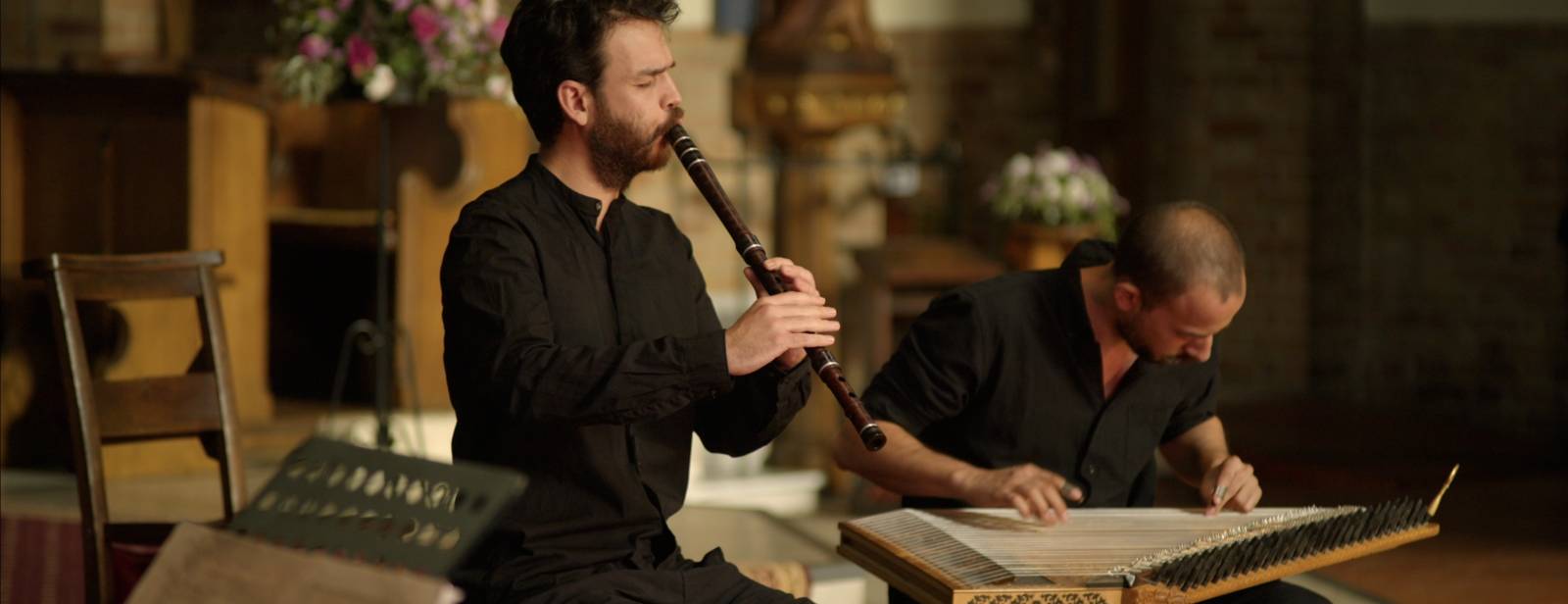GET TO KNOW | Idrisi Ensemble
Corsican composer, researcher, singer, portative organ, and hurdy-gurdy player, Thomas Fournil talks all things Idrîsî Ensemble.
Idrîsî Ensemble was founded by Thomas Fournil during his fellowship at the Guildhall School of Music. The Ensemble delves back into the rich history of Mediterranean Medieval music, offering up a unique and unmissable window into a world gone by. Resurrecting never-before-recorded 5th Century Roman chants, alongside UNESCO-protected Corsican polyphonies and more, their shows are captivating and one-of-a-kind fusion of music history and enlivening, inclusive performance, hailed as “a total game-changer. This is no escapist nostalgia but a living, exploratory art of real power.”
15 September 2025
I’m Thomas, a composer-performer specialising in medieval music, medievalism, and spectralism. My work is rooted in my Corsican-Occitan heritage and often entwines decolonial investigations, music archaeology, and oral traditions.
When and why did Idrîsî Ensemble form?
The ensemble took shape during my doctorate in composition, beginning in 2016. I wanted to explore new research on medieval music that I felt was not being put into practice. The Guildhall School funded trips to study with chant specialist and composer-performer Marcel Pérès, who became one of my supervisors. He showed me the importance of oral traditions in music archaeology and reshaped my understanding of West-European chant. I soon developed the fantasy of hearing male-dominated repertoires sung by women, such as the Corsican paghjella or Old Roman chant. The first to join me was Noémie Ducimetière. Together we built performance strategies that others embodied, and after several years the ensemble was born.
What excites you about performing the type of music you do?
Medieval chant and troubadour music are foundational to West-European history. Performing them is an opportunity to challenge narratives and change how people think about themselves and others. This is about connecting people, investigating heritage that we find empowering, and showing the legitimacy of diverse cultural backgrounds in the retelling of our stories. It often surprises audiences to learn that the Roman liturgy was sung in Greek, or that microtones, complex ornamentation and improvisation were central to our practices. Even in the Renaissance, counterpoint pedagogy was rooted in orality, and today singers around the Mediterranean still improvise within these rules. I believe conservatoires need oral tradition musicians, as well as creators who might feel alienated by classical music culture; I hope our work can help move things forward.
How does the ensemble create together?
First, I teach every member Old Roman chant; it takes years to master, but gives a foundation in ancient vocal techniques, ornamentation, melodic structures, and declamation. We work from period notation when possible, using call and response: one sings, others repeat. The gestural, structural, and symbolic dimensions of neumatic notation foster a very different musical psychology. We also learn from each other, integrating our diverse voices and traditions into a shared performance practice. Sometimes there is no precedent for what we aim to achieve, and we are also known for premiering medieval pieces – so it is demanding work. We want our music to be humble, honest, and to sound as though it rises from the soul: free, powerful and raw, but also precise and relaxed.
” In a world where one language disappears every two weeks, my hope is that these practices continue to evolve, offering unexpected ecologies and solutions for humanity’s future ”

What does it feel like to perform together?
Like a balancing act far above the ground, or like a trance.
What contemporary music do you hope will be unearthed 500 years from now?
For me, thriving oral traditions are contemporary music, and our most precious heritage. In a world where one language disappears every two weeks, my hope is that these practices continue to evolve, offering unexpected ecologies and solutions for humanity’s future.
What is your dream collaboration and venue?
The Rotunda of Thessaloniki – a Roman structure with extraordinary acoustics, once mausoleum, church, and mosque. I would love to sing there. My dream collaborators are already part of the ensemble.
What’s next for Idrîsî?
We’re soon performing in Manchester, Leeds, and Bristol, as well as Union Chapel for the London Jazz Festival. People have asked for recordings, and we hope to release some this year. Other exciting projects are coming up, but it’s a secret for now! We’re also about to plan several free workshops in London, funded by Arts Council England – so keep an eye on our socials and mailing List
” This is about connecting people, investigating heritage that we find empowering, and showing the legitimacy of diverse cultural backgrounds in the retelling of our stories. “